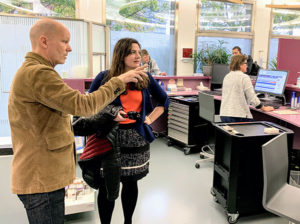Tag
Europe
-
N.C. journalist goes to Europe for lessons about opioid crisis
Last year, Taylor Knopf, a health care journalist at North Carolina Health News, spent more than a week out of…

-
Experts: Care coordination, medical homes key to tackling global aging issues
An aging population isn’t just a challenge for providers and policymakers in the U.S. – it’s an issue most nations…

-
Controversy over breast implants spreads across Europe
British clinics delivering cosmetic surgery were thrown into crisis by the decision last month of the French government to fund the removal…

-
Media must understand, explain privatization of health services
One of the points that stood out for me at the first European conference on health journalism was from conference…

-
•
Inspired by NHS, Lieberman calls for reporters to spotlight patient safety improvements
Fresh off a trip to powwow with health journalists, academics and officials in England as a Fulbright Senior Specialist, AHCJ…

-
•
Stark reflects on health journalism in U.S., Europe
The standards of health reporting in the United States are higher than ever before, according to AHCJ Vice President Karl…

-
•
International cooperative to share health data
Writing that “the importance of data sharing in advancing health is becoming increasingly widely recognised,” 17 major public health players…

-
•
UK’s Dartmouth-esque atlas yields familiar results
Writing for NPR’s health blog, Christopher Weaver looks at the NHS Atlas of Variation in Healthcare, which is similar to…

-
•
Lack of vaccination, awareness worsen UK flu season
The Guardian‘s Denis Campbell and Sarah Boseley report that a drop in vaccination rates and a lack of public awareness…

-
•
EU reviewing limits to physician work weeks
The Telegraph‘s Andy Bloxham writes that the European Union’s 48-hour-a-week average working time limit is under review, at least as…



